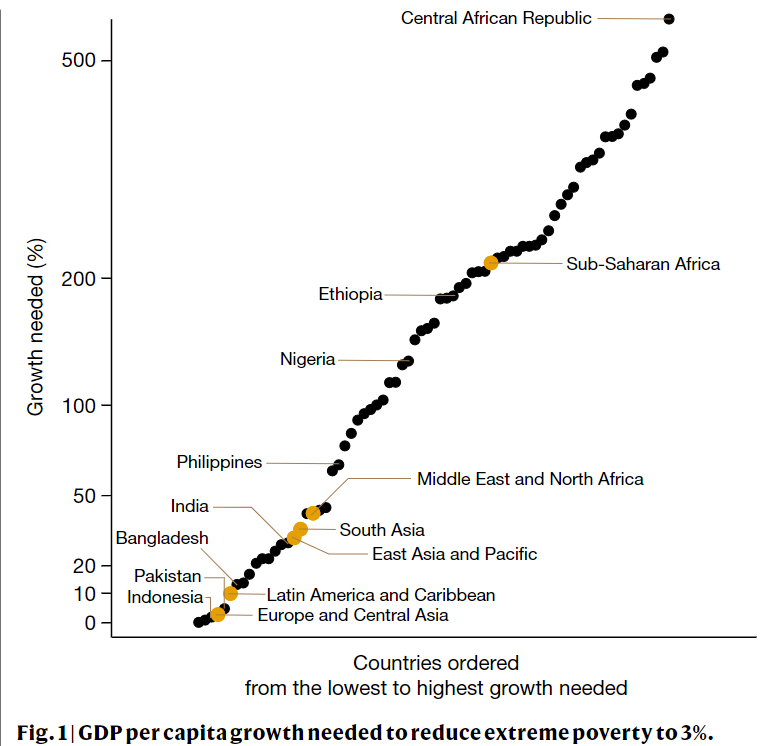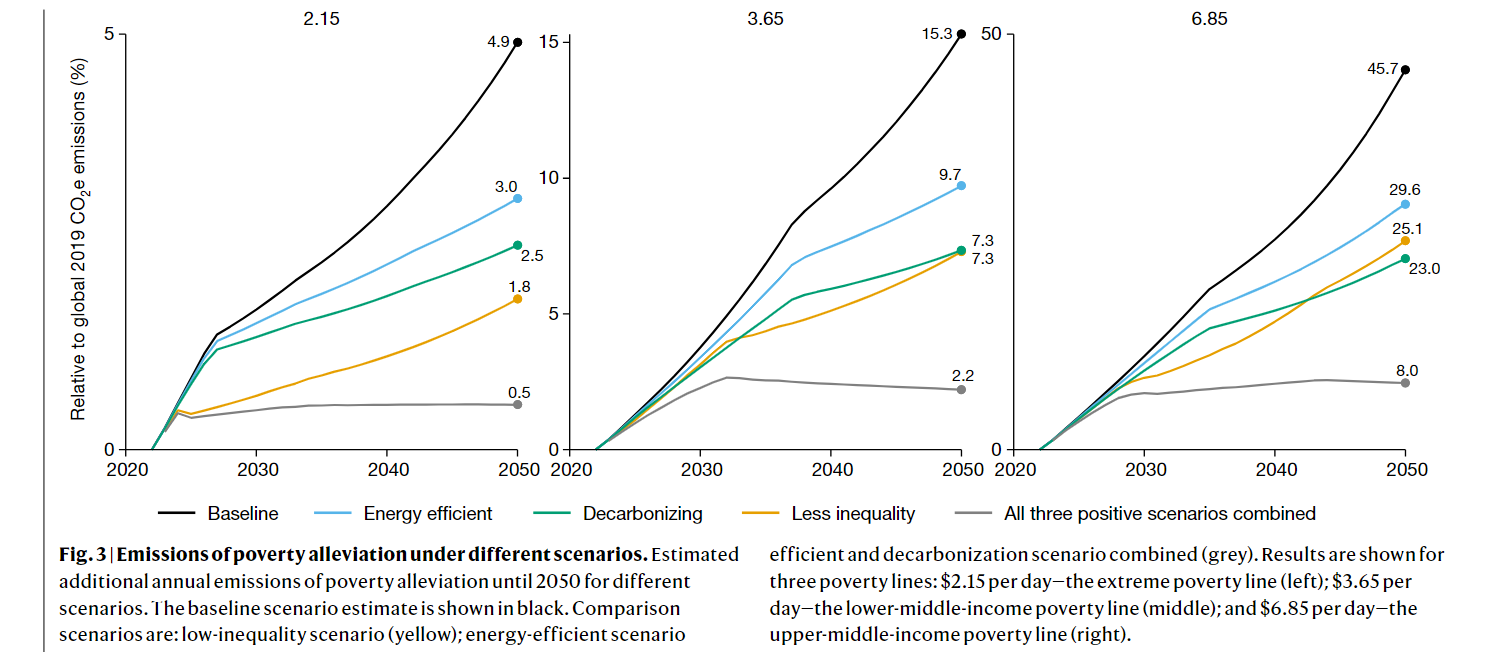Objective:
- Whether and under which conditions, containing climate change and alleviating poverty are compatible goals
Case:
Methodology:
- Random slope model: $ln(conpc_{y,c}) = (\beta_0 + \mu_{0,c}) + (\beta_1+\mu_{1,c}) ln (gdppc_{y,c}) + (\beta_2+\mu_{2,c})ln (year) + \epsilon_{y,c}$
- Income and consumption: 2022 Poverty and Shared Prosperity Report of the World Bank
Findings:
- a 1% increase in GDP per capita leads, on average, to a 1% increase in energy consumption, and 0.7% increase in carbon emission


- The number of people lifted out of extreme poverty between 2023 and 2050 relative to the no-poverty-reduction scenario amounts to just more than 1 billion by 2050
- Even if all new growth follow historical energy- and carbon-intensity patterns, alleviating extreme poverty does not affect the climate change challenge materially

Coding Reference:



